Wondering how to eat acorns? This 10-minute processing method is the absolute EASIEST way to remove the bitter tannins. (Plus, get 4 bonus recipes!)

Image by Peggychoucair from Pixabay
How to Eat Acorns: The Absolute Easiest Way
Can you eat acorns? Of course! All oaks produce acorns, and all acorns are edible. But when it comes to learning how to eat this foraging staple—especially processing acorns to remove the bitter tannins—there’s a bit of a trick to it.
Unfortunately, beginners can sometimes meet with discouraging results. But never fear, wildcrafting enthusiasts. I’ve got a method for processing acorns that’s simple and fast.
It’s time for the easiest . . . acorns . . . ever!
Start With the Basic Prep Work
The Meat of the Matter
The first thing we have to do is get the acorns out of their shells. This is true for any processing method. Remember that larger acorns are easier to work with and produce more food for the amount of effort you put in.
Normally, I use a hand-crank nutcracker. But my nutcracker is lost in a box somewhere and will likely stay lost until we finish remodeling the attic. In the meantime, I can make due with a handheld nutcracker and a pick.
If you are using a handheld nutcracker for processing acorns, I recommend that you let your acorns dry out for a couple of weeks. They’ll be a lot easier to work with. If you have the rotary hand-crank kind, it really doesn’t matter.
You May Also Enjoy:
“15 Wild Foods That Will Keep You Alive In An Emergency”
“Using Dandelions: 31+ Recipes & Remedies”
“How to Not Die While Wildcrafting: 15 Rules for Foraging Safely”
The Daily Grind
Once you have the nut meat out of its shell, I suggest grinding it up. Whole acorns can eventually be processed (usually), but crushed or ground acorn meat has more surface area to speed things along. (Hint: This is part of the secret to my super-simple method regarding how to eat acorns.)
If you come across acorns with bad spots, you can always cut those out. Or toss any that you’re not comfortable with. Don’t worry if some of your acorns have a little worm in them. If you’re brave, they’re edible, too, and even taste a little buttery.
Processing Acorns the Traditional Way
Acorns contain chemicals called tannins that make them inedible without processing. (A few oaks are reputed to be so light on tannins that you can eat them raw. But I’ve never encountered them.)
Traditional methods of removing the tannins come in “cold” and “hot” water versions.
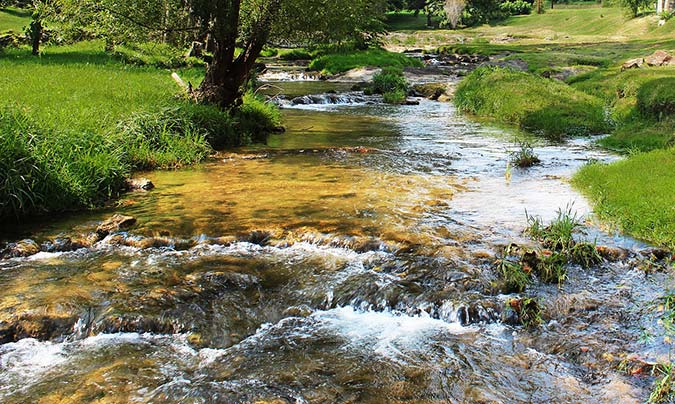
Image by radford wine from Pixabay
Processing Acorns With Cold Water
The cold versions are fairly simple. You either place the shelled acorns in a bag and bury them at the bank of an active stream or place them in a bowl of water and change it frequently. The upside to this is that it requires little skill or effort, and it retains the acorns’ nutrition.
The downside of this method is that it takes a really long time. Depending on the amount of tannins in your acorns, how frequently you change the water, and other factors, you could be waiting weeks or months. Some Indians reportedly came back a year later to dig up their acorns.
You May Also Enjoy:
“Top 10 Best Survival Gear Items for New Survivalists & Preppers”
Processing Acorns With Hot Water
The hot method involves boiling the acorns in multiple changes of water. This is faster but can still take the better part of an afternoon. And here, too, we find some downsides.
In a survival or wilderness setting, this method would require a lot of resources. You need a good bit of fuel for your fire and several changes of water. There’s also some technique involved.
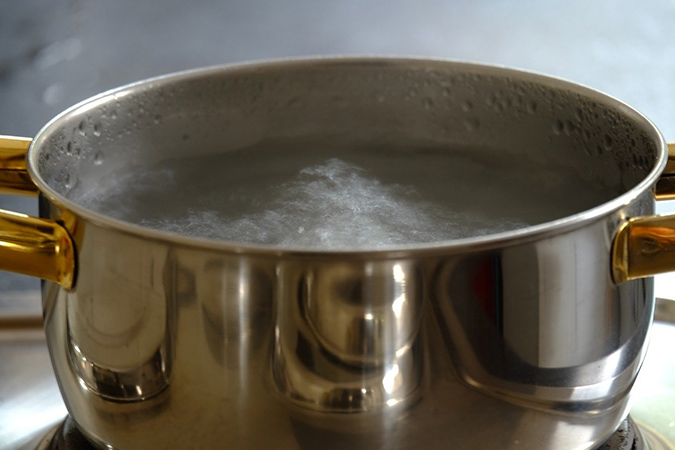
Image by Holger Schué from Pixabay
You have to pour already-boiling water onto the acorns each time. If you pour cold water onto hot acorns, you risk binding the tannins to them, and they may never fully come out. Finally, this method cooks out the healthy oils from the acorns, rendering them less nutritious.
What’s a wildcrafter to do?
10-Minute Acorns
Prepare to have your expectations blown out of the water by this super-simple method.
This is by far the easiest, fastest, and overall best method for processing acorns that I have ever come across.
First … Blend
Start by dumping your shelled acorns into a blender. Add water. The quantity isn’t really important. You just want the blender to be able to function.
Now start your blender and let it go until the acorns are ground to a pulp. The longer you let it blend, the better this will work. A minute or two is probably good.
In a survival scenario, you could accomplish the same thing with a rock. But until then, a blender offers a much faster and easier path to learning how to eat acorns.
You May Also Enjoy:
“A Forager’s Guide to Running Out of Toilet Paper”
“Purslane: The Omega-3 You Can Grow for Free! (With Recipe)”
Now pour the “acorn smoothie” into a cloth strainer bag. In a survival situation, you could use a clean sock. Close the bag and hold it under running water in your sink.
Now … Squeeze
Massage the bag, first allowing it to absorb water and then squeezing it back out. Do this until the water runoff is clear. Now squeeze out all the water you can, open the bag, and have a little pinch of the acorn meal.
If it’s bitter, go back to massaging it under the water. Don’t be afraid to massage it a bit longer than you think it needs. Lingering tannins can throw the taste of your food off. The massaging process will probably take 3–7 minutes.
In a survival situation, you could do this in a stream or in a bowl, with a few changes of water.
Now you can wring out as much water as possible and spread out the acorn meal on a dehydrator or drying tray. Or put it in your oven on warm until it is completely dry.
Because this process preserves more of the acorn oils, your acorn meal may have a tendency to spoil. Stick your dried acorn meal in the freezer to maximize its life.
In a survival situation, you would ideally store the acorns in their shells and only process as many as you needed. Acorns can stay good all winter if kept in a cool, dry place.
How Many Ways Can You Eat Acorns?
Before I wrap up, let me give you a few example recipes that show you how to eat acorns. These are by no means the limits of what you can do after processing acorns, and a quick Google search will turn up several others for you.
But I’ll add in a little tip:
If you should find that you didn’t get all of those tannins out, and your recipe has some bitterness to it, try adding milk. Milk seems to bind with the tannins, making them fairly harmless.
Acorn Puddle Cookies
This one has a story with it. The first time I tried this recipe, I used a standard cookie sheet without sides. What I didn’t know was that as the acorn meal got hot, it would run right off the sides of the sheet and land on the cooking element, setting the oven on fire.
I did this two years in a row before I made a note in my recipe book. Let me save you the trouble. Use a cookie sheet with sides.
2 cups acorn flour
1 teaspoon baking soda
1 teaspoon cinnamon powder
1/8–1/4 teaspoon salt (to taste)
3 tablespoons melted butter
1 egg
1 teaspoon vanilla extract
Add up to 1/4 cup water, if needed
Mix ingredients together, and pour the mixture onto a cookie sheet (with sides). You can arrange them like cookies, but I’ve never had them hold together. Maybe you’ll have better luck than me. Bake at 350°F (175°C) for 10 minutes.
By the way, this isn’t my recipe, but I can’t remember where it came from. The original version wasn’t called a puddle cookie.
Acorn Bread
1 cup acorn meal
1 cup white flour
1 egg
1 splash olive oil
1 teaspoon baking powder
1/4–1/2 cup sugar
Mix everything together, and cook in the oven for 30 minutes at 400°F (200°C). Optionally, you can skip the sugar and pour maple syrup over the top when it comes out of the oven.
Simple Acorn Porridge
Just mix some acorn meal with water or milk (to desired thickness), and heat it up on the stove top. Add sugar or maple syrup to taste. Nothing fancy, but it’s a warming breakfast for a cool fall morning. Yum.
Acorn Coffee
This one is a little different from the others because it does not call for processing acorns first. You grind up unprocessed acorns fairly fine in a coffee grinder. Then roast them on the stove top.
Remember to keep stirring the grounds. You want them to brown, not burn.

Image by carlo sardena from Pixabay
Boil the roasted grounds in water until it suits your taste. It’s good with a little milk.
Sadly, the grounds don’t seem to work in a coffee maker. They just soak up the first of the water and become an acorn gel. The rest of the water just runs around it. To have real success with acorn coffee, you’ll need to cook it over a stove top or fire, and then strain the grounds out afterward.
A Cup of Fall Comfort
Acorn coffee is one of the few coffee substitutes that I actually enjoy. It doesn’t contain any caffeine, and the taste makes me think of fall.
I’m not sure what exactly is going on that keeps this from being a bitter, astringent mess. My guess is that the roasting process somehow locks the tannins into the acorn grounds, keeping them from leeching into the coffee. But, as I say, that’s just a guess.
If you’d like to see some more acorn recipes or approach the traditional methods with a bit more finesse, you can read about that here.
What Do You Think?
Feeling more confident about how to eat acorns yourself? Do you have an acorn recipe or advice on processing acorns that you’d like to share? Tell us all about your experiences in the comments below!
_______________________
This is an updated version of an article that was originally published on October 24, 2018. The author may not currently be available to respond to comments; however, we encourage our Community members to chime in to share their experiences and answer questions!
The Grow Network is a participant in the Amazon Services LLC Associates Program, an affiliate program designed to provide a means for our team to earn fees for recommending our favorite products! We may earn a small commission, at no additional cost to you, should you purchase an item after clicking one of our links. Thanks for supporting TGN!

Scott Sexton is a TGN Trailblazer, a highly experimental gardener, an unrelenting weed-eater, and a largely non-profit herbalist (much to his wife’s chagrin). When Scott is not teaching foraging classes, testing out theories in the garden, or grazing in the forest, he can be found at his Facebook page, “A Forager’s Guide to the Zombie Apocalypse.”
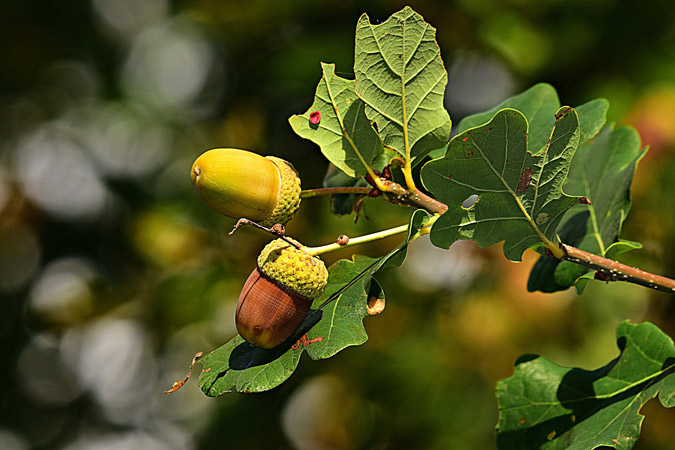
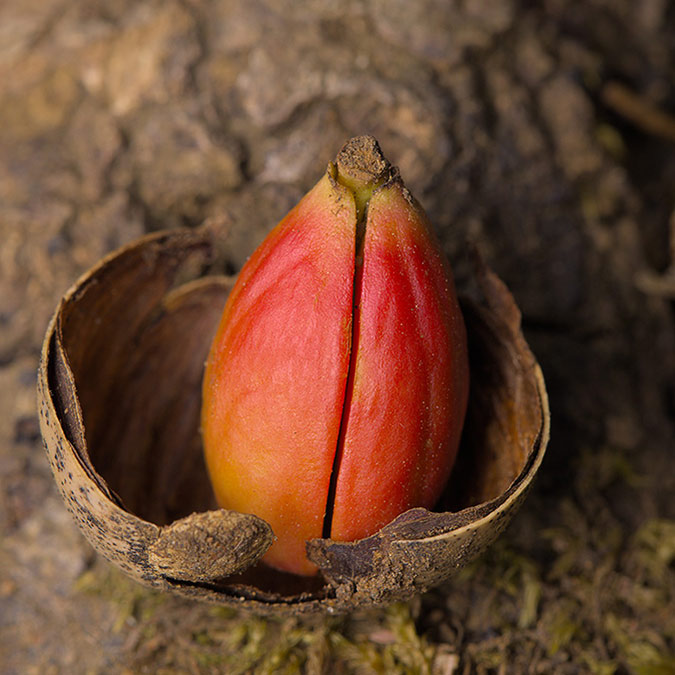
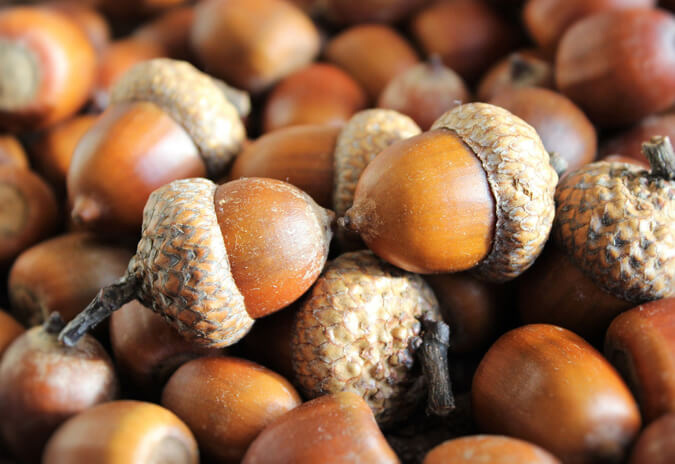








COMMENTS(13)
Very interesting and informative! Good information about tannins, as I tend to be sensitive to them.
Glad you enjoyed it.
I like the quick prep method. I’d love to try this but it’ll be a challenge to get enough between the deer, squirrels and chipmunks.
They do love those acorns. Good luck.
Hi all. When and where I grew up we didn’t process our acorns such as I se in this article. We’d pick and store in gunny sacks hanging from the ceiling of the graineries or in the root celler.
We also collected what we called “cheepoo” (an English bastardization of tseepwaah an Ininomowin[Cree] word for sharp) nuts and “mamkan”(an English bastardization of the Ininmowin word mahmahkahahn[wave]) nuts. All these nuts would be soaked in water and salt then roasted. Then we’d use a nutcracker(pliers like tool) and feast. Nana would occaisionally use the nut(flesh) in cakes, puddings, cookies etc. Or we would just pick them of their host tree/bush and crack them(usually with our teeth) and eat them. I still do it that way. However 60 autumns of cracking nut shells with my teeth has afforded me a few less teeth to crack and eat nuts with.
Time to consider what I’ve just read. Thank you for the article.
That’s very interesting. I hadn’t heard of hanging them dry. I may have to experiment with that in the future. Thanks for sharing.
Tannins are in tea also. Why are they “inedible”? I like the coffee recipe. And as always, I would prefer eating it with grounds (good prebiotics, but can cause some disturbance).
It’s not that tannins are inedible outright. It’s more about quantity and concentration. Most acorns have too many tannins to be eaten raw. I’ve heard enough people claim to found and eaten edible raw acorns to believe they must be out there, but they sure don’t grow around me.
hi Scott, thank you for a very good article. I love acorns, being good, gluten-free and money-free, who can ask for more, right 🙂
As I process them I discovered how to get another acorn product = acorn starch. And also tannin.
English is not my native language so I apologize for all “strange” mistakes. I sincerely hope my writing is at least semi-understandable :).
This is my procedure:
1. First business is to remove shells, I don’t have nut cracker so I have blisters to prove how hard they are.
2. Put them into a blender, add water and blend for a few minutes. This stage is important to get the starch as centrifugal force pulls the starch out from acorns.
3. Stretch short Nylon sock for women over the pot and pour into it the mixed pulp from blender. Than carefully take the sock and make a knot at the open end. You get some nice fat “sausage”. Now squeeze it good to get out all the white liquid with starch. Pour this white liquid into mason jar and leave it overnight to separate starch from tannin water.
At the bottom it will be the white-ish substance. This is starch and on the top it will be dark water with tannin. Carefully siphon water into some pot (you can process it later).
Remaining starch pour into shallow containers (or into dehydrator). The thickness of the starch in each container should be only a few millimeters so it will dry quickly. You can dry it on the sun or in the dehydrator or in the oven on min temperature. If someone wants to be extra thorough, one can use pipette to sip liquid which forms on the top of drying starch :).
When the starch is dry it is good to blend it again to break the clumps and then finally sift it to get beautiful white-ish starch. You can use it as any other starch.
I believe that with starch your Acorn Puddle-Cookies will hold together.
4. Back to “sausage” with acorn meal. Because the meal is safely packed inside the stock, you can massage, squeeze mash and squash it under warm running water or soak it. As Scott already explain this process of cold/warm rinsing and drying.
I believe (and hope) that the Nylon sock doesn’t leach any harmful chemicals.
5. Collected dark water with tannin can be boiled down a little to reduce and concentrate and then stored in bottles for many uses.
I have a recipe for the best pancakes ever:
– 4 eggs
– 4 full Tablespoon acorn flour
– 3 full Tablespoon acorn starch
– 1 teaspoon baking powder
– appr. 100 ml mineral water (add slowly to the right consistency)
Mix all ingredients together, set aside for 10 minutes than mix again. The mixture will be more on “runny side” but don’t worry, it will stick together just fine to be able to make nice thin soft pancakes. In our country we usually don’t make thick pancakes. Ours are thin, we spread marmalade or veggies or other filling on them and roll them up.
Servings: 7 pancakes
You are what you eat. I am an oak! 🙂
I rounded up a bunch on one of my weekend under the stars. using one of my cloth bags and smashed them again some rocks. After all the shells cleaned out. I placed them in a my little cast iron and in no time I had oil coming off . All I did was pressed them flat. I poured off some of the oil to do some testing. I flip my acorn flat cake one time it cooked like a peanut butter. Did not taste like it So I throw lil Texas Pete on it and fix it right up. The test I did was take the oil and poured rings on top of a stump and let some run down the side of the stump facing the little island. I went back and broke out
spotting scope well I was right the stump was a hit. I was able to get 3 before
the final noted members of the family were falling down. So if you are in the woods and like squirrels bait a stump.
That is hilarious and awesome! I would never have thought to try that. Thanks for sharing!
Do you have a source for your hand crank nutcracker? Marlene
Incredibly, a video on processing acorns from the 1930’s popped up today. I thought it was interesting so included the link below in case anyone is interested.
It clearly still takes a lot of water.
https://www.youtube.com/watch?v=x4-F5N63Cdo